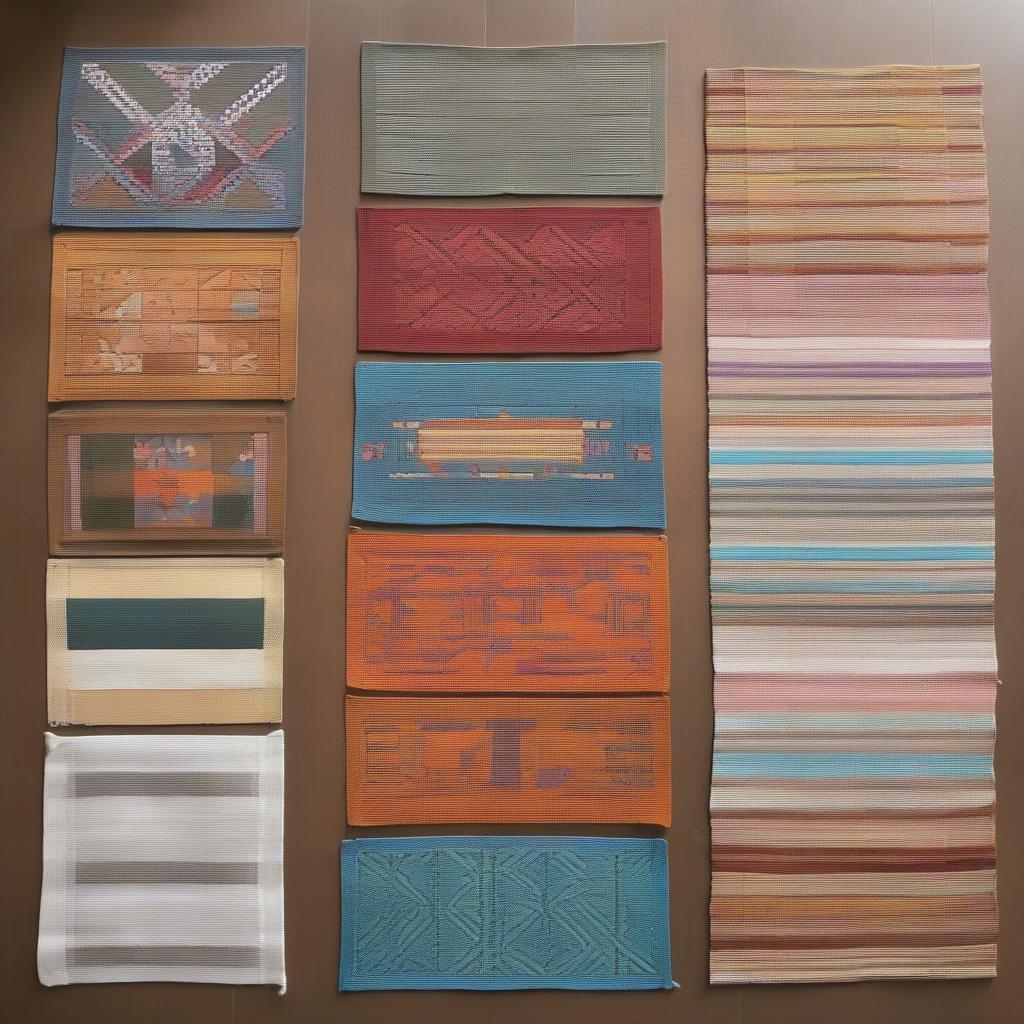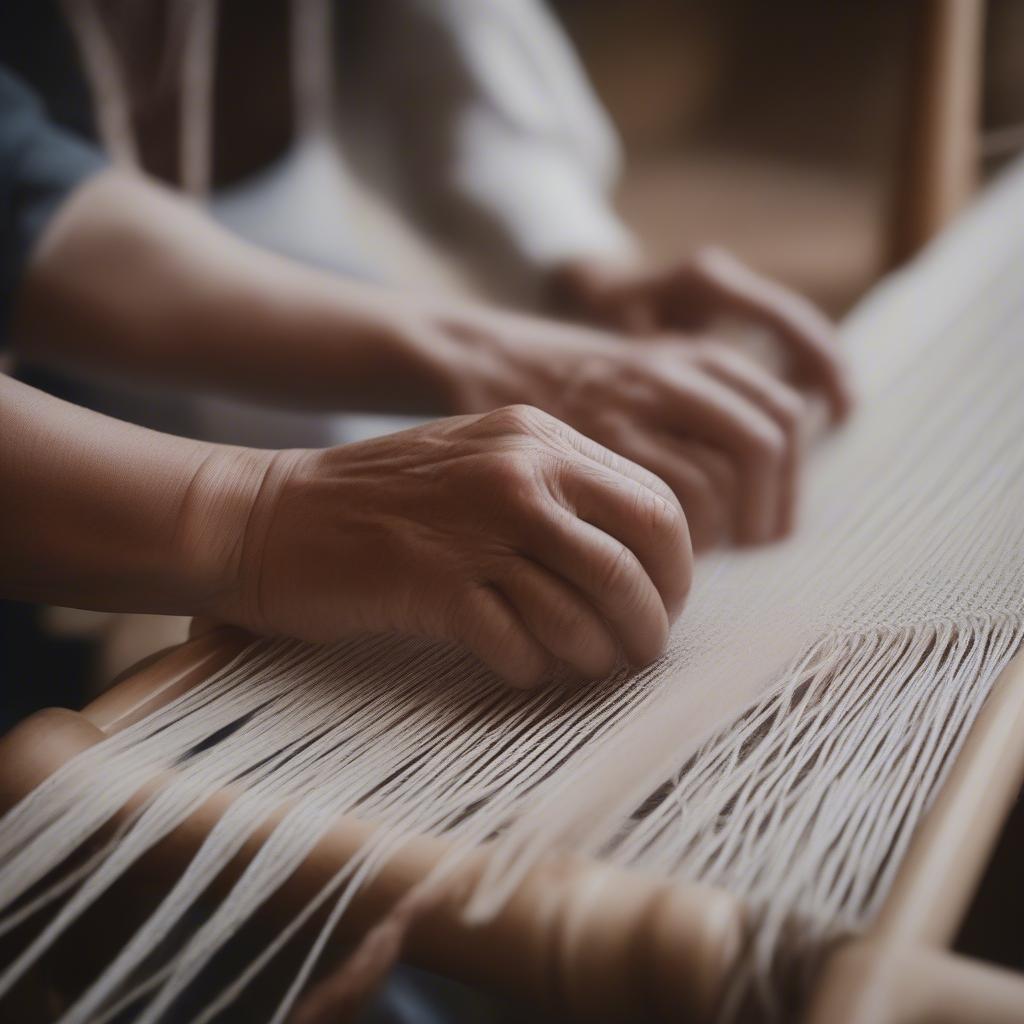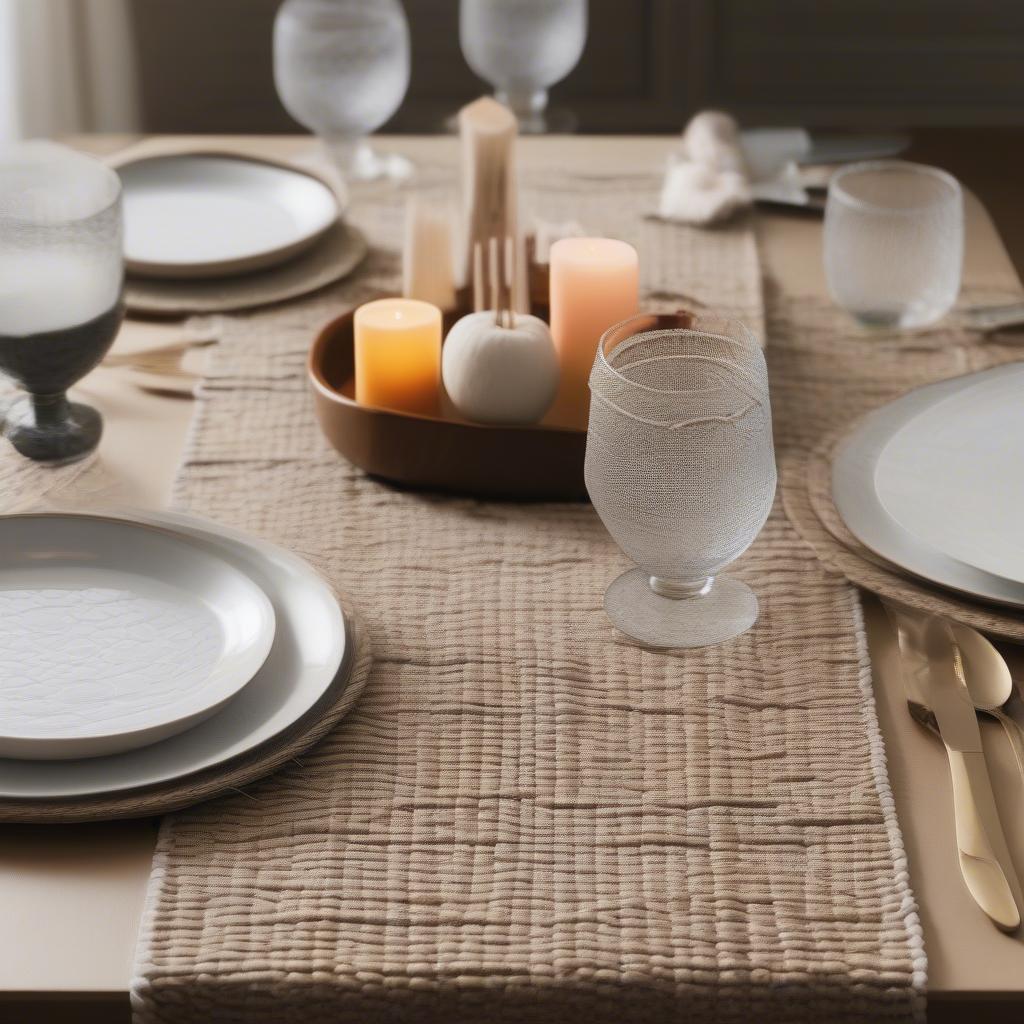Weave Table
Exquisite Table Runner Weaving Patterns: A Comprehensive Guide
Table Runner Weaving Patterns offer a fantastic way to add a touch of handmade elegance to your home decor. Whether you’re a seasoned weaver or just starting out, exploring the diverse world of table runner weaving patterns opens up a world of creative possibilities. From simple geometric designs to intricate floral motifs, there’s a pattern to suit every taste and skill level. Learn how to transform ordinary yarn into stunning centerpieces with our comprehensive guide.
Choosing the Right Table Runner Weaving Patterns
 Choosing the Right Weaving Patterns for Your Table Runner
Choosing the Right Weaving Patterns for Your Table Runner
Selecting the perfect weaving table runner patterns can feel overwhelming with so many choices. Consider your weaving experience, the desired aesthetic, and the overall size and shape of your table. For beginners, simple geometric patterns are a great starting point. More experienced weavers might enjoy the challenge of intricate floral or pictorial designs. Think about the colors and textures you want to incorporate to complement your existing decor.
Understanding Different Weaving Techniques for Table Runners
weaving table runner pattern involves various techniques. From basic tabby weave to more complex twill and overshot patterns, each technique creates a unique texture and visual effect. Tabby weave, known for its simple over-under structure, is perfect for beginners. Twill creates a diagonal pattern, adding depth and interest to your table runner. Overshot weaving involves supplementary weft yarns that float over the ground weave, creating intricate patterns.
Materials and Tools for Weaving a Table Runner
Before you begin your weaving journey, gather the necessary materials and tools. A sturdy loom is essential, and the size will depend on the width of your desired table runner. Choose high-quality yarn in colors that complement your home decor. Other essential tools include a shuttle, a beater, a tapestry needle, and scissors.
Yarn Selection and Color Palettes for Table Runners
The yarn you select will greatly influence the final look and feel of your table runner. Consider the fiber content, weight, and texture of the yarn. Natural fibers like cotton and linen offer a beautiful drape and are easy to care for. Wool provides warmth and texture. For a touch of luxury, consider silk or bamboo yarn. Experiment with different color palettes to create a table runner that reflects your personal style.
Getting Started with Table Runner Weaving Patterns
 Getting Started with Table Runner Weaving
Getting Started with Table Runner Weaving
Once you’ve chosen your swedish weaving table runner pattern and gathered your materials, it’s time to warp your loom. This process involves threading the warp yarns onto the loom, creating the foundation for your weaving. Follow the instructions provided with your chosen pattern carefully. Proper warping ensures a smooth and even weave.
Reading and Interpreting Weaving Patterns
Weaving patterns are like roadmaps, guiding you through the weaving process. They use symbols and charts to indicate the order in which to interlace the weft yarns with the warp yarns. Take the time to understand the key and abbreviations used in your pattern. Practice reading and interpreting the pattern before you begin weaving.
“A well-chosen yarn and a carefully followed pattern are the keys to a successful weaving project,” says renowned weaving expert, Amelia Weaverton.
Weaving Your Table Runner: Step-by-Step Guide
how to weave a table runner involves a series of steps: shedding, picking, beating, and taking up. Shedding creates an opening for the shuttle to pass through. Picking involves passing the shuttle carrying the weft yarn through the shed. Beating compresses the weft yarn against the woven fabric. Taking up advances the woven fabric on the cloth beam. Repeat these steps to create your table runner.
Troubleshooting Common Weaving Issues
Even experienced weavers encounter occasional challenges. Broken warp threads, uneven tension, and skipped stitches are common issues. Learning how to troubleshoot these problems is crucial for a successful weaving project. Don’t be afraid to unravel a few rows if necessary to correct a mistake.
“Patience and persistence are essential virtues for any weaver,” advises weaving instructor, John Threadwell.
Finishing Touches and Care for Your Woven Table Runner
Once you’ve finished weaving, remove the table runner from the loom and weave in the loose ends. You can add fringe or other decorative elements to enhance the design. Proper care will ensure that your woven table runner lasts for years to come. Handwashing or gentle machine washing is recommended, depending on the fiber content of the yarn.
 A Finished Woven Table Runner
A Finished Woven Table Runner
Conclusion
Creating a woven table runner with unique table runner weaving patterns is a rewarding experience. Whether you are a beginner or an experienced weaver, the process allows you to express your creativity and add a personal touch to your home décor. With careful planning and attention to detail, you can create a beautiful and functional piece that you’ll cherish for years to come.
FAQs
- What type of loom is best for weaving a table runner?
- What are the best yarns for weaving a table runner?
- Where can I find free table runner weaving patterns?
- How do I fix a broken warp thread?
- How do I care for my woven table runner?
- What are some common mistakes to avoid when weaving a table runner?
- Where can I find more information on weaving techniques?
For further inspiration, consider exploring our weaver end table selection. Need help? Contact our 24/7 customer service hotline at +84 388 951 999 or visit our offices in Hanoi, Vietnam or Tech Avenue, Suite 12, San Francisco, CA 94105, USA.
